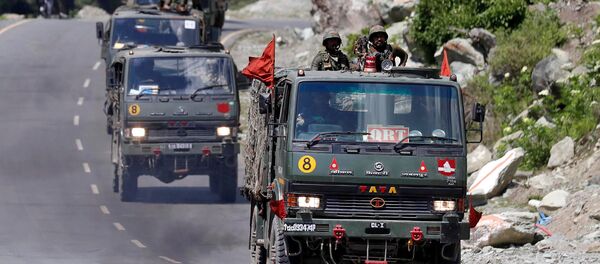As India gears up to sign the pending third foundational military pact - Basic Exchange and Cooperation Agreement (BECA) - with the United States, a former Indian Army official and author of several books on modern warfare, Pravin Sawhney, claims that the Americans will be able to control India's strategic assets including cruise and ballistic missile once these agreements cumulatively come into force.
"India is to sign the Basic Exchange & Cooperation Agreement with the US to use its geo-spatial maps for buying armed MQ-9B drones. The US can now theoretically control the command & control systems of our ballistic & cruise missiles with its cyber capability as part of sensor to shooter loops!", Sawney tells Sputnik.
Later this month, US Deputy Secretary of State Stephen Beigun will be arriving in New Delhi to strengthen Indo-US bilateral relations before the two plus two dialogue event that is reportedly slated to take place on 26 and 27 October.
With the two previously signed military communication deals - Logistics Exchange Memorandum of Agreement (LEMOA) and Communications Compatibility and Security Agreement (COMCASA) - the countries are allowed to use each other's designated military facilities for re-fuelling and replenishment, and share important military information from the Indo-Pacific region.
Along with Beigun, Indian Defence Minister Rajnath Singh and US Defence Secretary Mark Esper, will also be part of the two plus two dialogue alongside Indian Prime Minister Narendra Modi and Indian National Security Adviser Ajit Doval.
Without elaborating on the details about a potential threat to India's strategic missile system, citing "national security issues", Sawney further hints at disruptive technologies defined by the US administration.
"The US Department of Defence has listed 'network communications' as one of 13 disruptive technologies to be acquired. Why? Because there's a need for intelligent & autonomous networks - with our own data & computing - which have minimal cyber dangers", Sawney emphasises.
The issue related to "national security" threats was raised by the Indian side when the US shared the BECA draft agreement last year.
"India had conveyed the concerns to the US establishment. However, the two sides have been working on the contentious issue since early this year and the US agreed to modify the draft to address India's concerns", a government official told Sputnik.
India is expected to purchase 30 General Atomic MQ-9A Reaper drones from the US for approximately $3 billion and use them in the border region with China as well as strategic waterways, defence sources said earlier this month.





